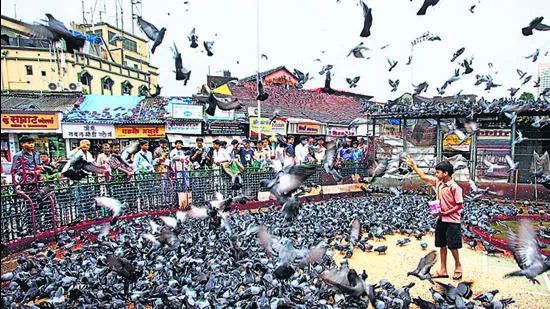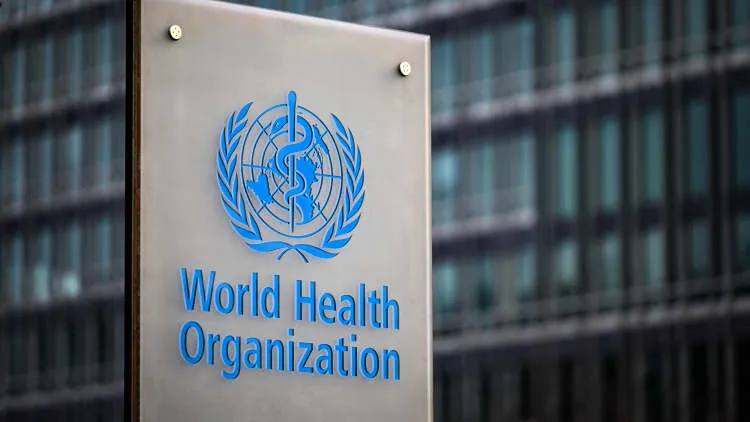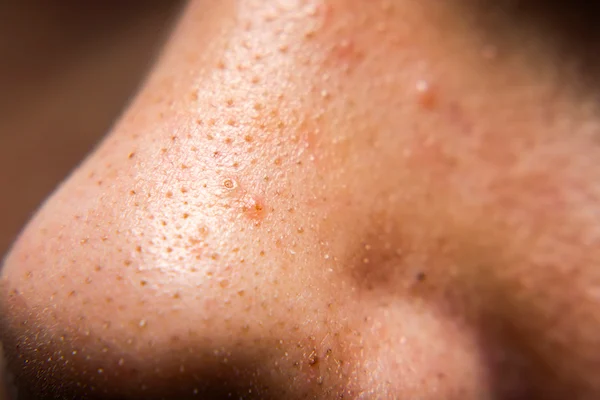The Kabutarkhana, a 100-year-old pigeon-feeding ground located in the heart of Dadar, Mumbai, is under scrutiny as the Brihanmumbai Municipal Corporation (BMC) assesses whether it poses a public health hazard. Known for its historical and religious significance, the Kabutarkhana has long been a central location for feeding pigeons, particularly for followers of the Jain faith. However, concerns from residents regarding the health risks associated with the pigeons’ droppings have led the BMC to investigate the situation more thoroughly.
Pigeons are often seen as a health risk due to the potential transmission of diseases through their droppings. Among the primary concerns are respiratory conditions, especially lung fibrosis, which is often associated with prolonged exposure to pigeon droppings. In recent years, residents of the area, living in close proximity to the Kabutarkhana, have voiced their worries about the possibility of contracting diseases, such as histoplasmosis and cryptococcosis, that are associated with the accumulation of bird droppings. This has led the BMC to take action to determine whether the Kabutarkhana is indeed a health hazard.
In response to these concerns, the BMC has begun gathering scientific evidence, collaborating with institutions like KEM Hospital, Sion Hospital, the Indian Council for Medical Research (ICMR), and the World Health Organization (WHO). The goal is to ascertain whether the health problems faced by residents, such as lung-related issues, are indeed linked to the presence of the Kabutarkhana or the pigeons that frequent it. This study aims to bring clarity to a situation that has divided local residents, some of whom are concerned about their health, while others see the Kabutarkhana as an important part of their religious practices and the local heritage.
The debate surrounding the Kabutarkhana’s existence is also a matter of cultural importance, particularly for the Jain community. According to the Jain Tirthankar Shantinath Trust, the body responsible for managing the Kabutarkhana, the feeding of pigeons is deeply rooted in religious beliefs. The trust argues that lung fibrosis and similar health issues are not caused by the presence of the Kabutarkhana, despite growing concerns from local residents. They insist that the issues raised by residents are not directly linked to the pigeons or their droppings but may be due to other environmental factors.
To ensure that all perspectives are considered, the assistant commissioner of the G North Ward, Ajit Kumar Ambi, has been engaging with various stakeholders. A meeting with the Jain Tirthankar Shantinath Trust and representatives from the Shri Shantinath Bhagwan Shwetambar Jain Temple, located opposite the Kabutarkhana, was held on March 25, 2023. The trust reaffirmed its position that the pigeons are not responsible for lung fibrosis, and emphasized that religious and cultural reasons drive the feeding of pigeons in the area.
At the same time, the BMC has made it clear that if scientific evidence supports the idea that the Kabutarkhana is contributing to health problems, drastic actions may be taken. These actions could include shutting down the pigeon-feeding ground completely or relocating it to a less congested area. Potential relocation sites, such as near Kirti College in Worli or T Valu Road in Worli, have been suggested. These areas are believed to have better proximity to the sea, which could benefit the pigeons while reducing health risks to residents due to stronger winds.
The BMC’s decision to relocate the Kabutarkhana is not without precedent. Over the past 15 years, there have been multiple proposals to revamp the site, including plans to beautify the area, reduce its circumference, install a glass roof, raise its height, and refurbish its railings. However, these proposals have failed to materialize, leaving the Kabutarkhana in its current state. The BMC has also considered installing a fountain to restore its historical charm, but issues related to space constraints, traffic, and public health concerns have always posed challenges.
One of the key concerns regarding the Kabutarkhana is the accumulation of pigeon droppings, which residents fear may contaminate food sold in the nearby marketplace. The proximity of food stalls to the pigeon-feeding ground has raised fears of foodborne illnesses, with local residents expressing concern that pigeon droppings may harbor harmful bacteria, which could be transferred to the food being sold in the market. The BMC has responded by promising regular cleaning of the area, which includes cleaning the Kabutarkhana three times a day and deploying cleanup marshals to maintain hygiene.
Despite these efforts, the concerns raised by residents remain unresolved. Some argue that the BMC’s cleaning efforts are insufficient and that the accumulation of droppings continues to pose a risk to public health. Others feel that relocating the Kabutarkhana is the best solution, as it would reduce the health risks associated with pigeon droppings and allow the pigeons to continue being cared for in a location that does not pose a threat to residents’ well-being.
The situation surrounding the Kabutarkhana also highlights the challenges faced by urban areas when trying to balance religious and cultural practices with modern public health concerns. While many residents support the religious significance of the Kabutarkhana, others are more focused on the potential health risks associated with the pigeons and their droppings. This tension between religious practices and public health is not unique to Dadar but reflects a broader challenge faced by cities across the world, where cultural practices must be evaluated against the backdrop of urbanization, public health, and environmental sustainability.
As the BMC continues its research and consultation with medical experts, the fate of the Kabutarkhana remains uncertain. However, one thing is clear: any decision made will have far-reaching consequences for the residents of Dadar, the Jain community, and the pigeons that have made the area their home for nearly a century. Whether the Kabutarkhana is relocated, shut down, or cleaned and maintained more effectively, it will be interesting to see how this iconic heritage structure can adapt to modern-day challenges while preserving its historical and cultural significance.
In conclusion, the future of the Kabutarkhana is at a crossroads, with the potential for both cultural and public health implications. The BMC’s decision will depend largely on the results of the scientific studies being conducted, as well as ongoing dialogue between the stakeholders involved. As Mumbai grapples with its urbanization challenges, the Kabutarkhana will continue to serve as a reminder of the delicate balance between heritage preservation and public health.










